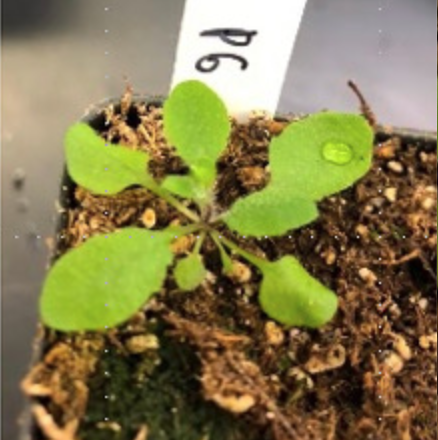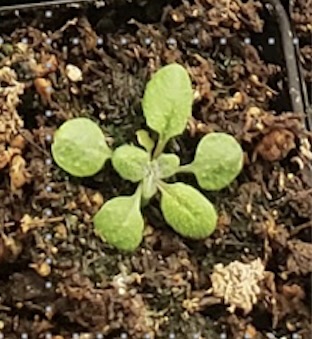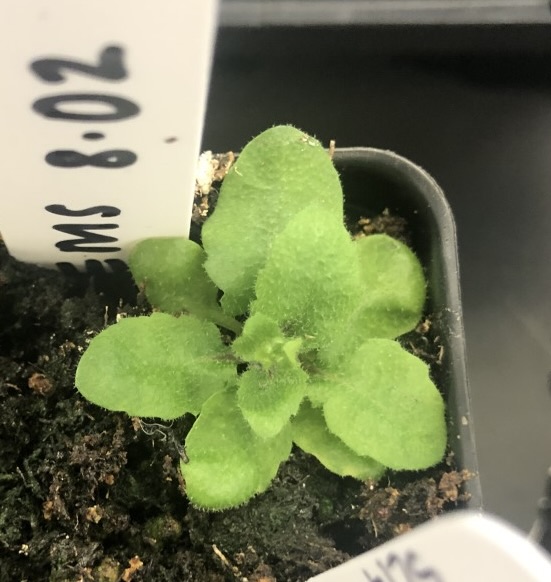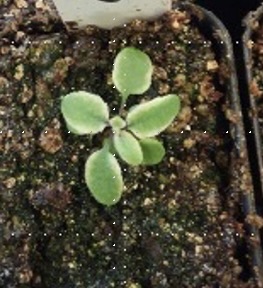Mutant Database
Model plant Arabidopsis thaliana and its mutants are used as experimental materials for the MPG CURE. These include the wild-type Col-0, the PLIP3 overexpression mutant (PLIP3-OX) and the EMS (ethyl methanesulfonate) mutants that carry secondary mutations on top of the primary PLIP3 overexpression mutation. The PLIP3-OX plants were generated by integrating the PLIP3 coding sequence under the control of the constitutive 35S promoter into the genome of the wild-type plant. Secondary mutations were introduced by treating PLIP3-OX seeds with the mutagen EMS. A PLIP3 suppressor mutant is expected to suppress the function of PLIP3 and subsequently revert the phenotype of PLIP3-OX plant to a (partially) wild type.
These plants were grown at ambient temperature on open shelves in three different classroom locations. The light intensity was set at approximately 100 mmol/m2/s, although it may vary depending on shelf location. The light/dark cycle was 16 hours of light and 8 hours of dark. Plant images in this database were taken by MPG CURE students, and development stages ranged from four to seven weeks, depending on the semesters. The images were further curated after the semester before uploading to the database.
The MPG CURE database includes a selection of mutants discovered in the classroom. We categorized the mutants into four major groups:
Please note that this categorization was based on visual observation, and the boundaries between categories may sometimes be unclear. We aim to incorporate quantitative phenotypic measurement data to the database in the future to better distinguish between mutant types and improve categorization accuracy.
In this database, unless otherwise labeled, the order of the plants in the images is standardized as wild type Col-0, PLIP3-OX, and the EMS suppressor mutant from left to right.



